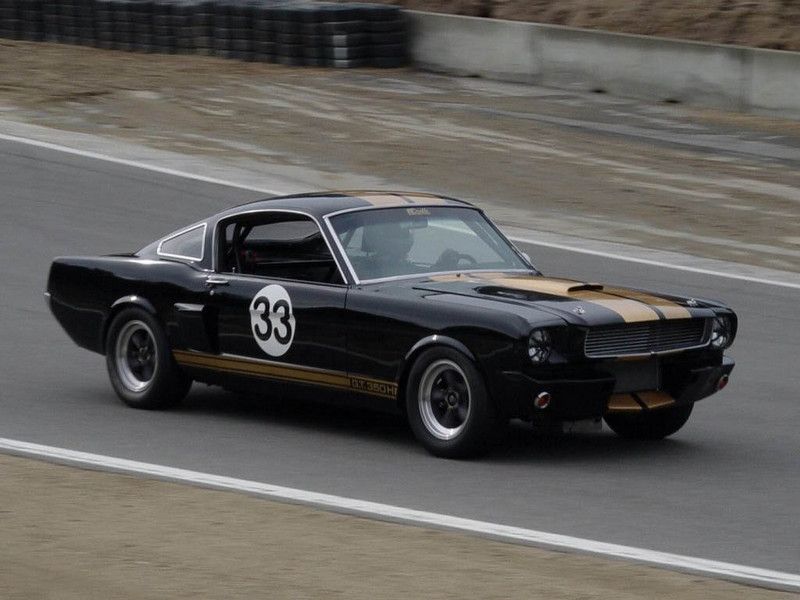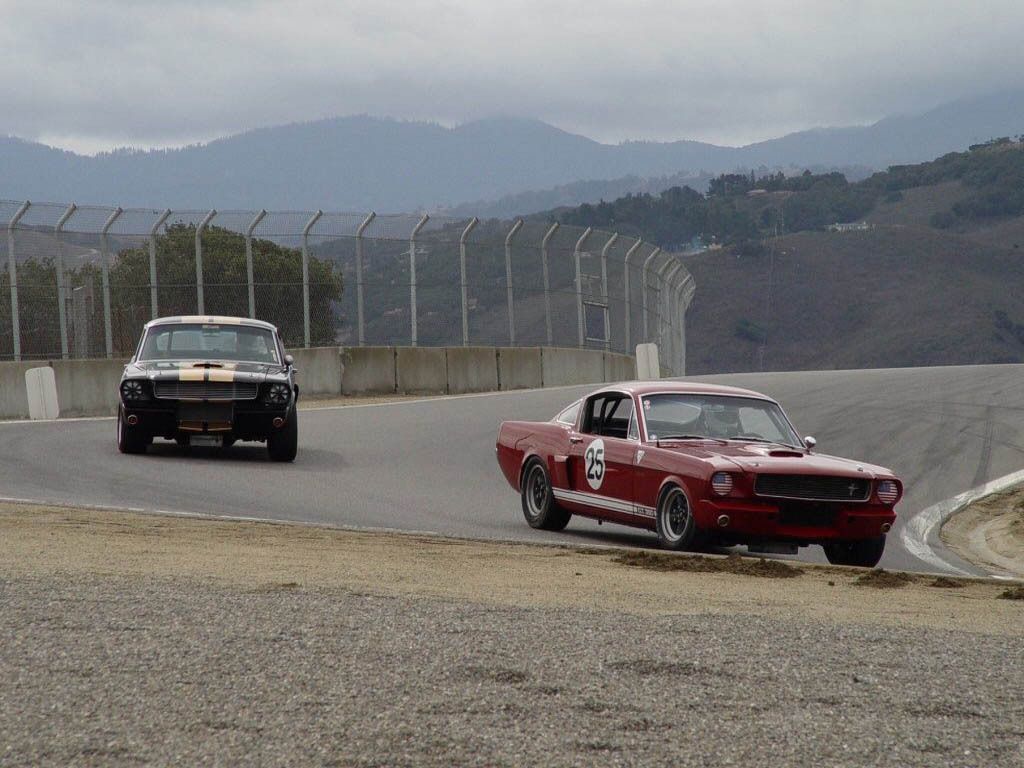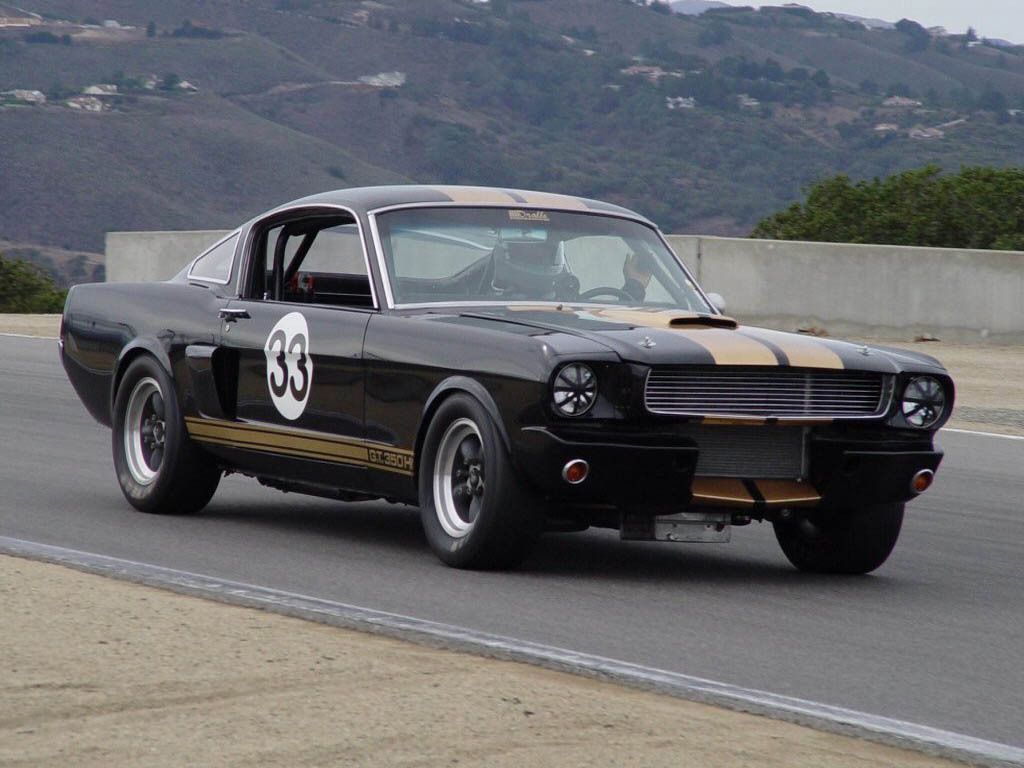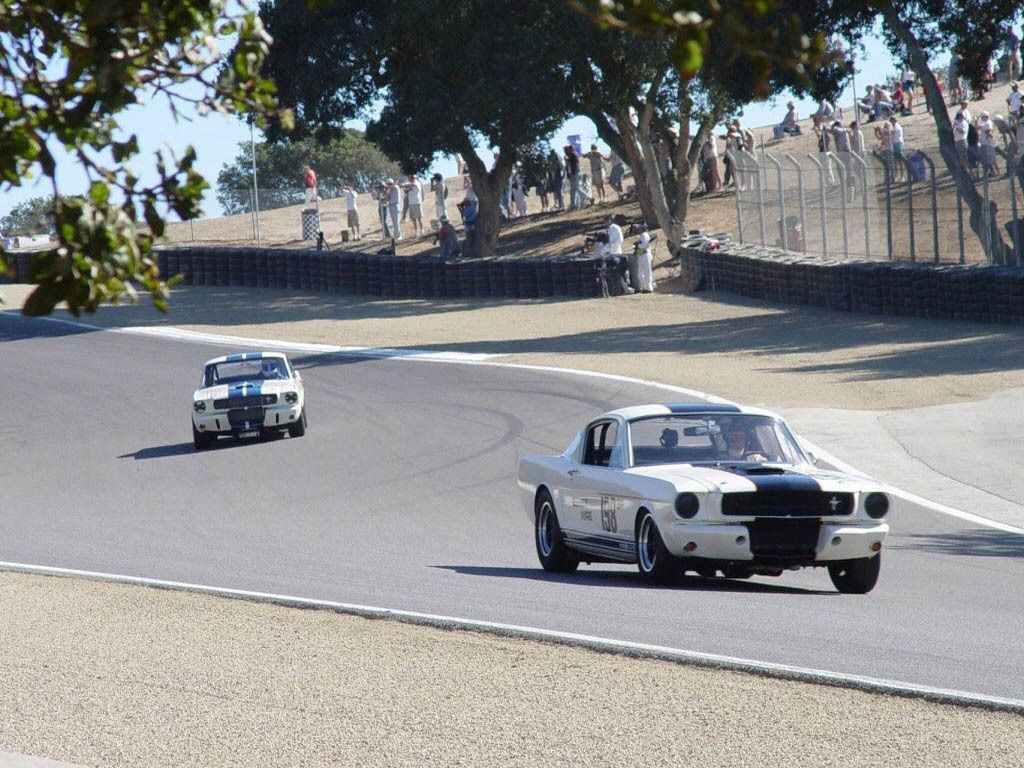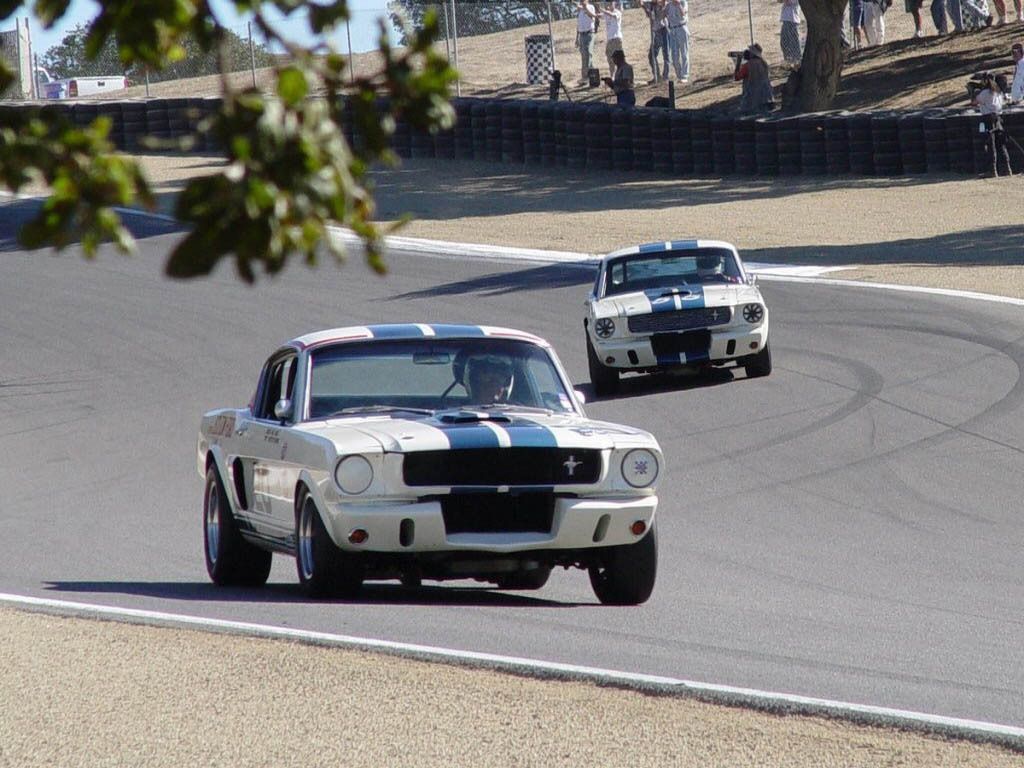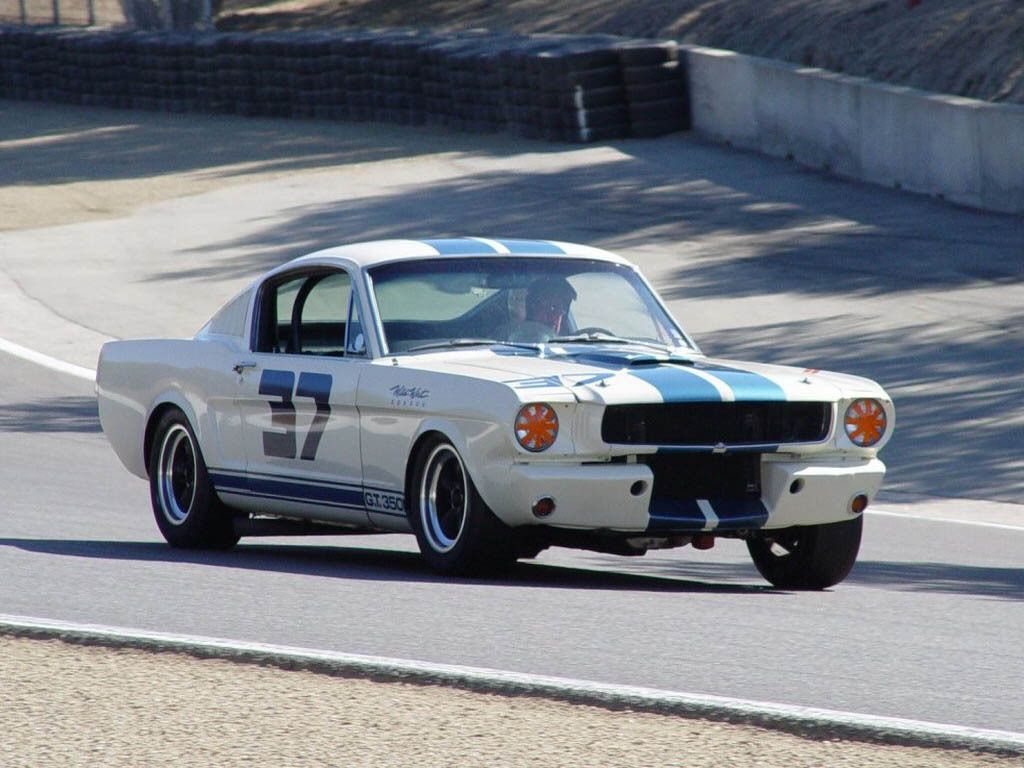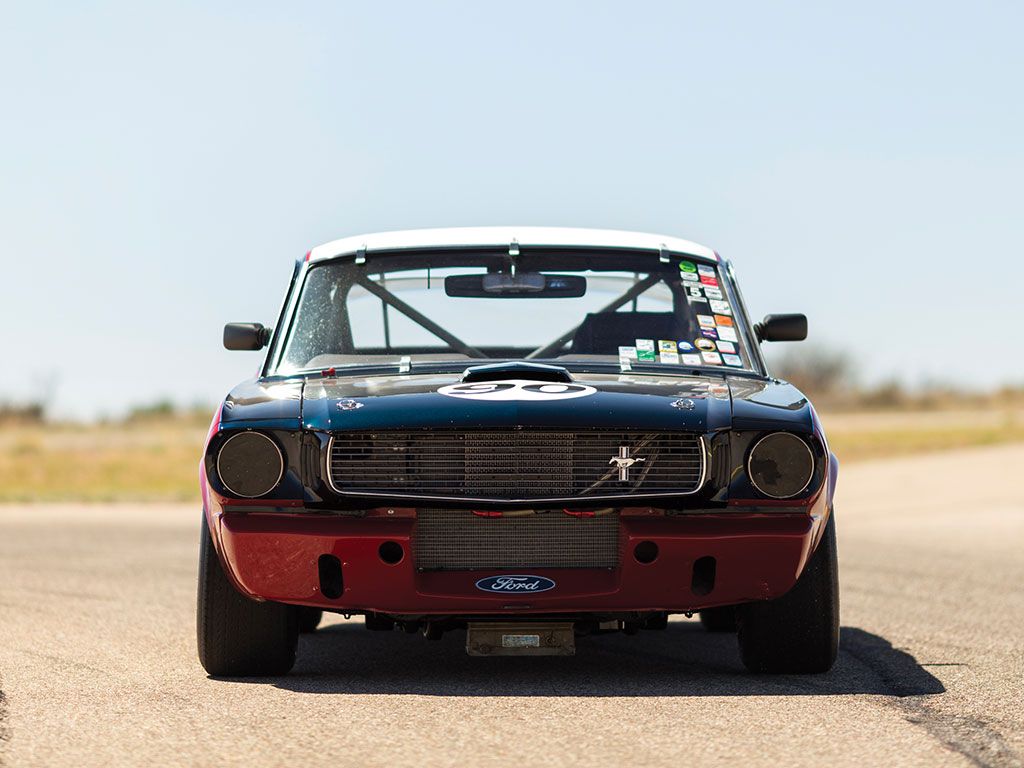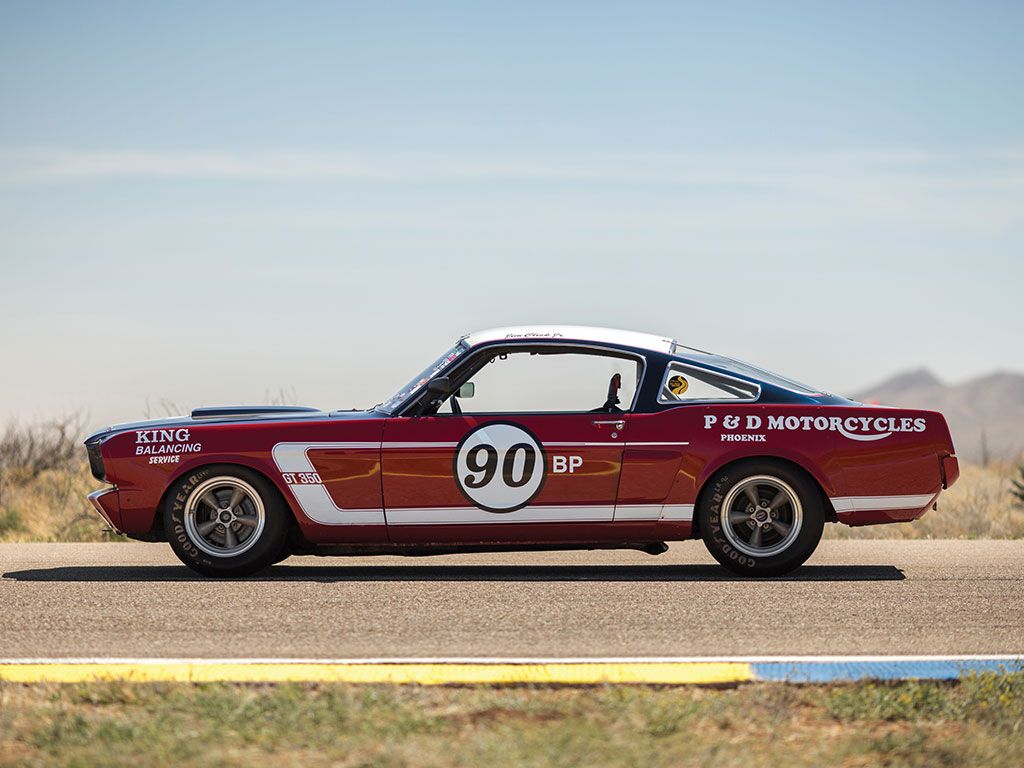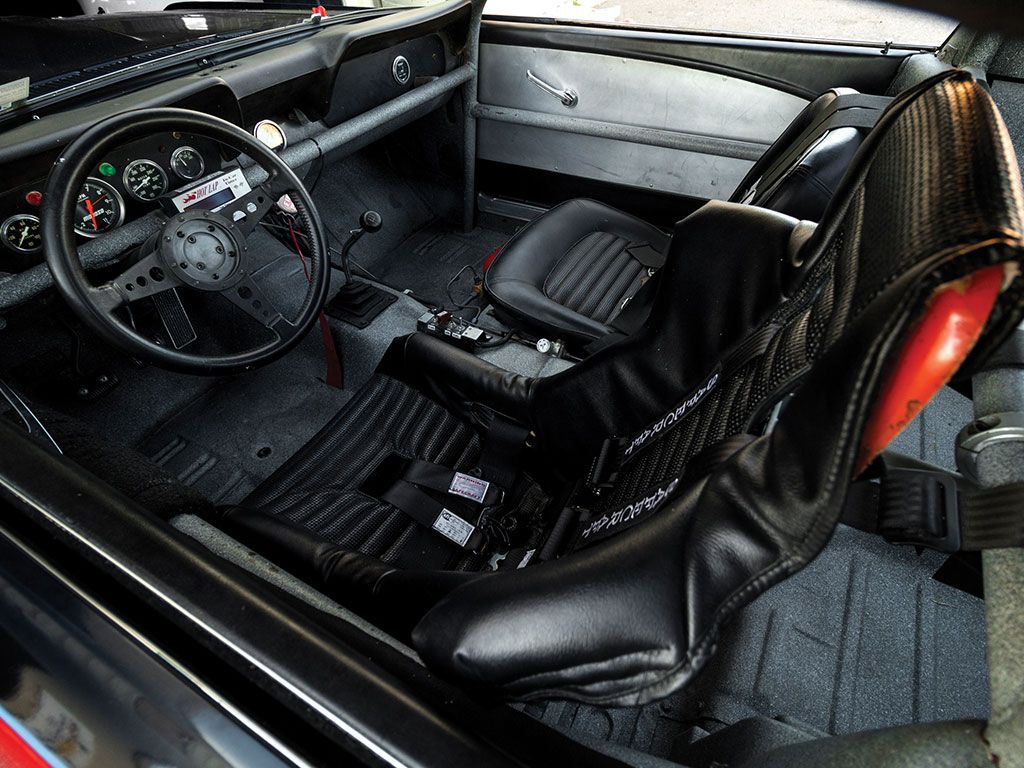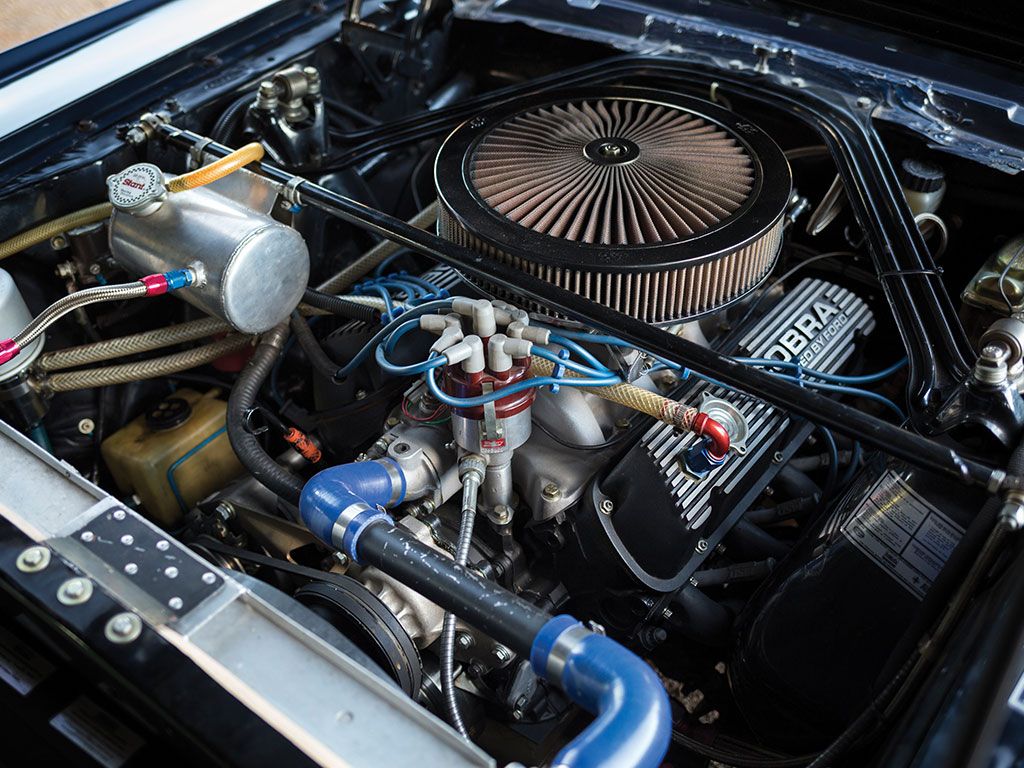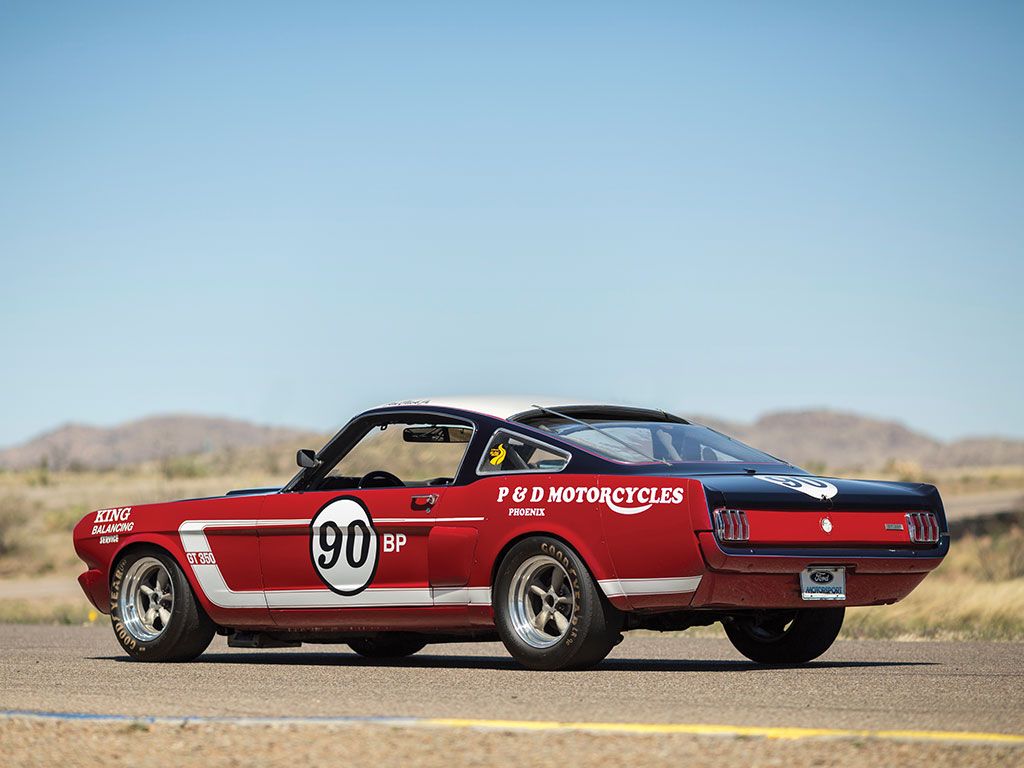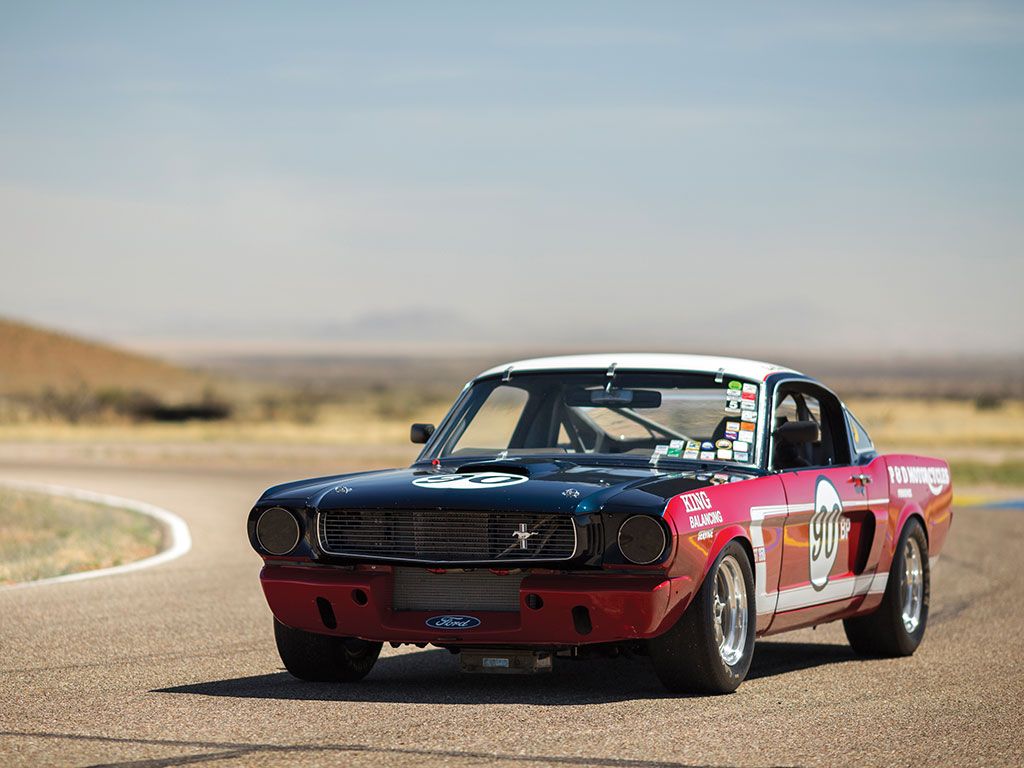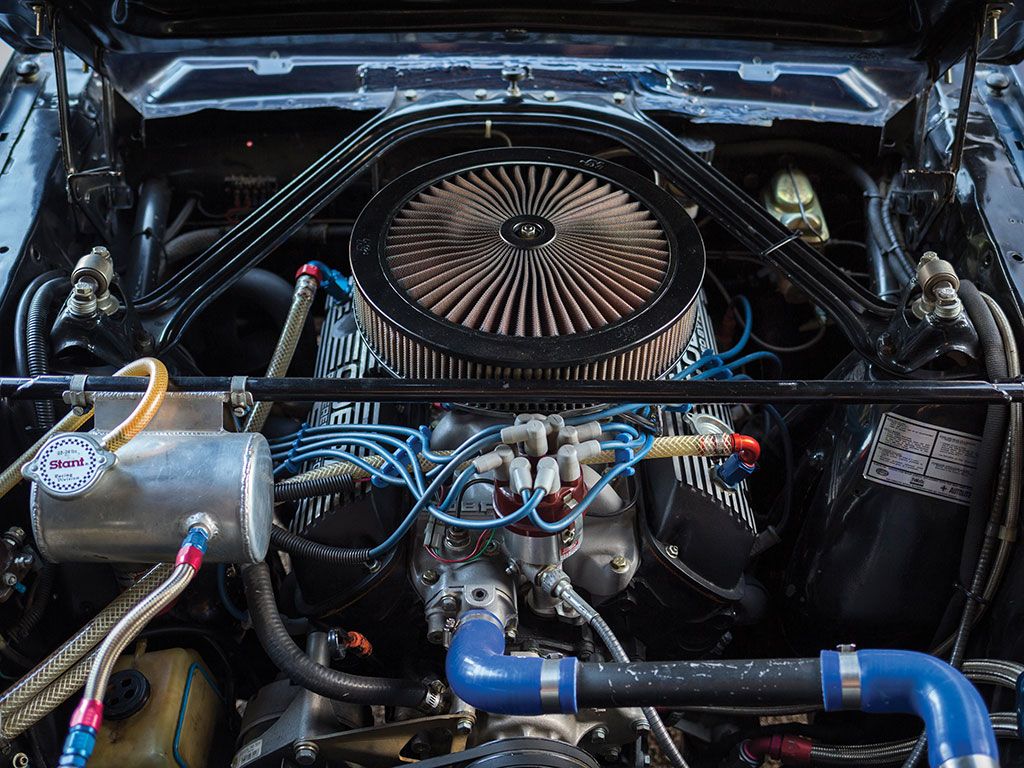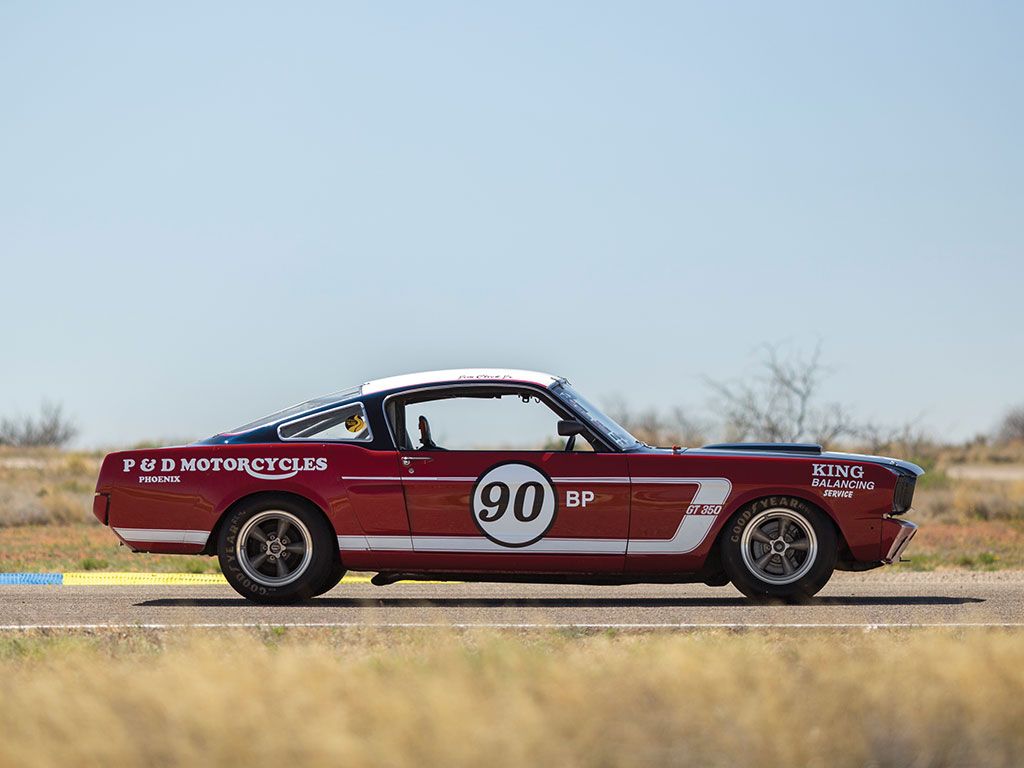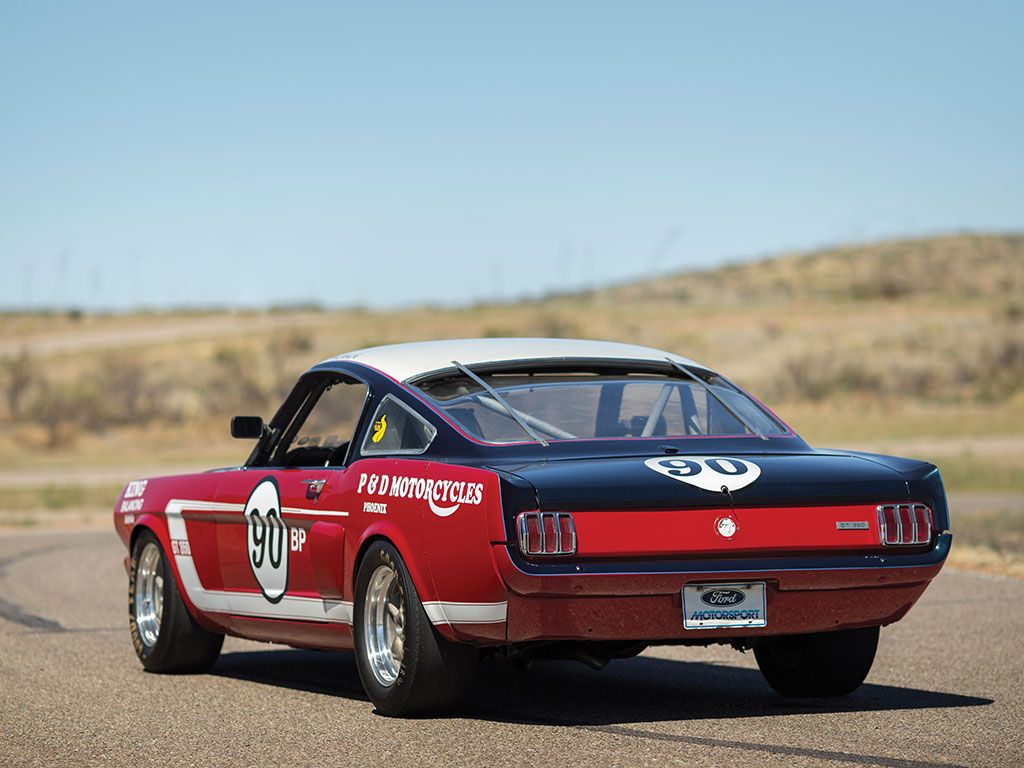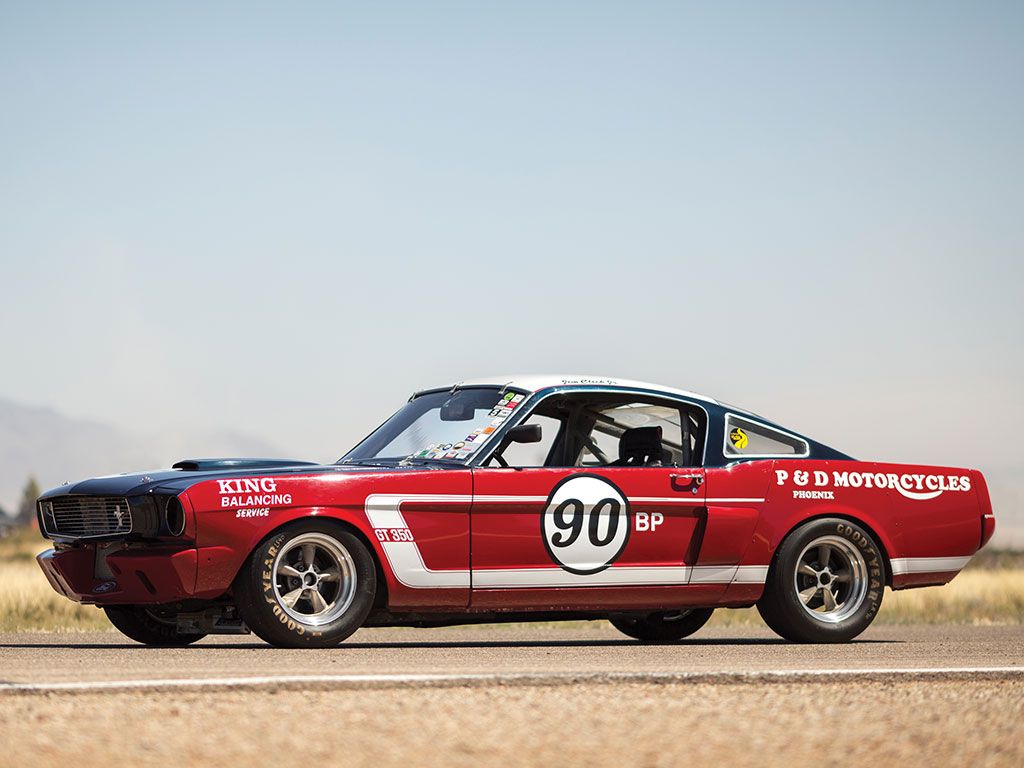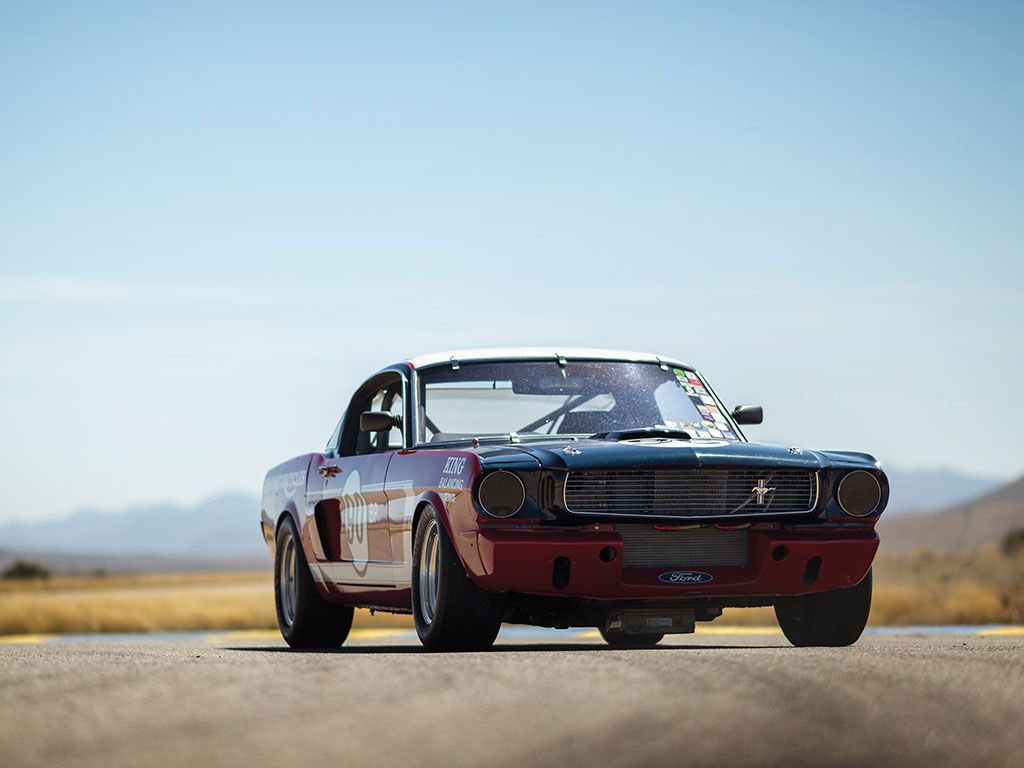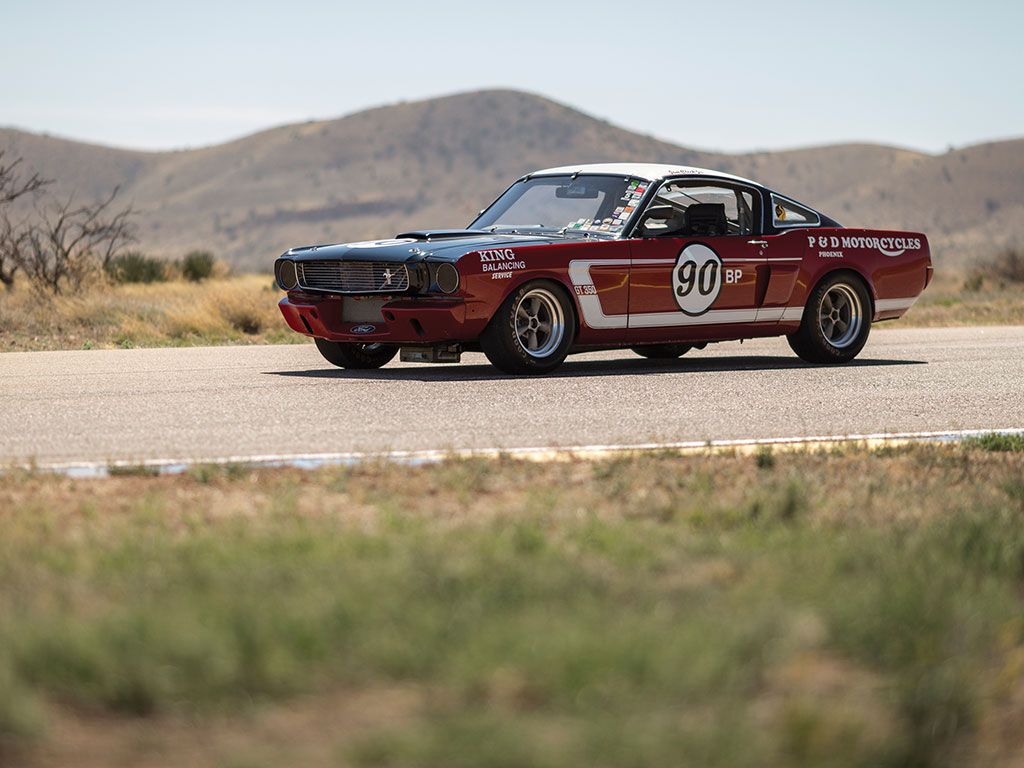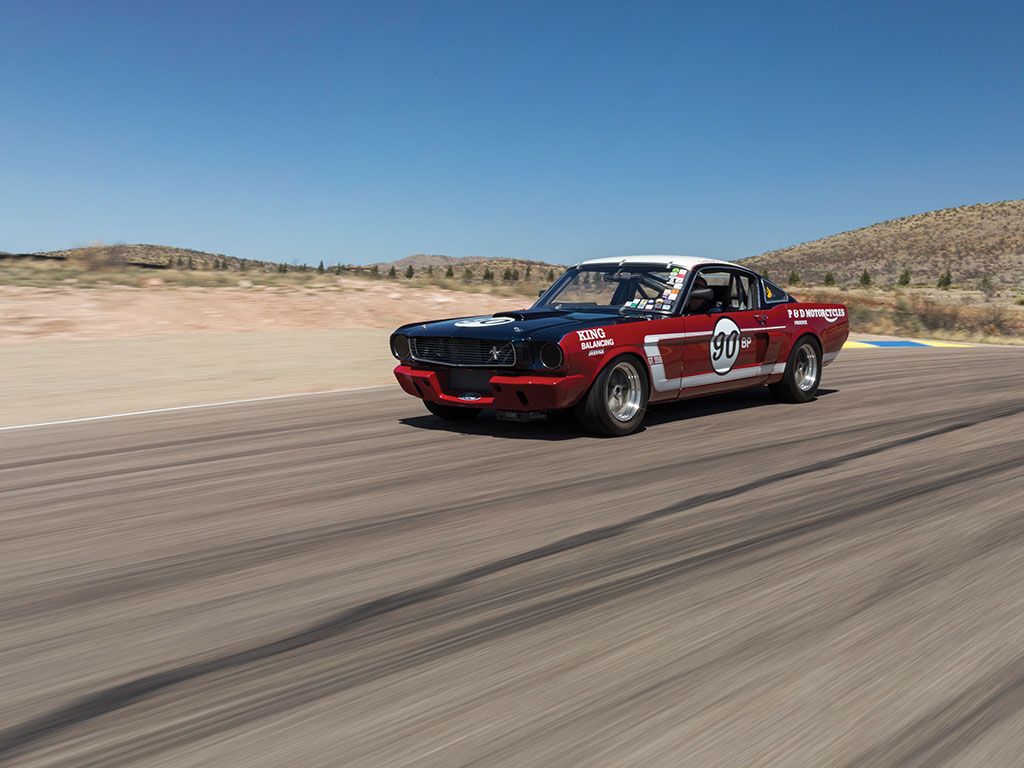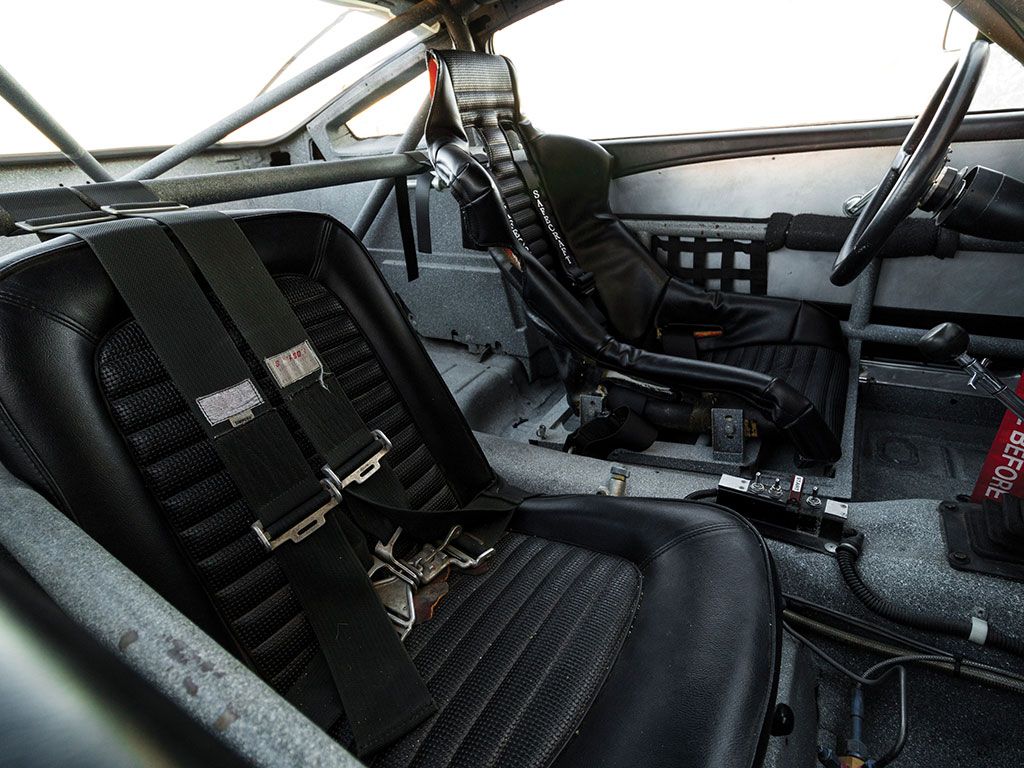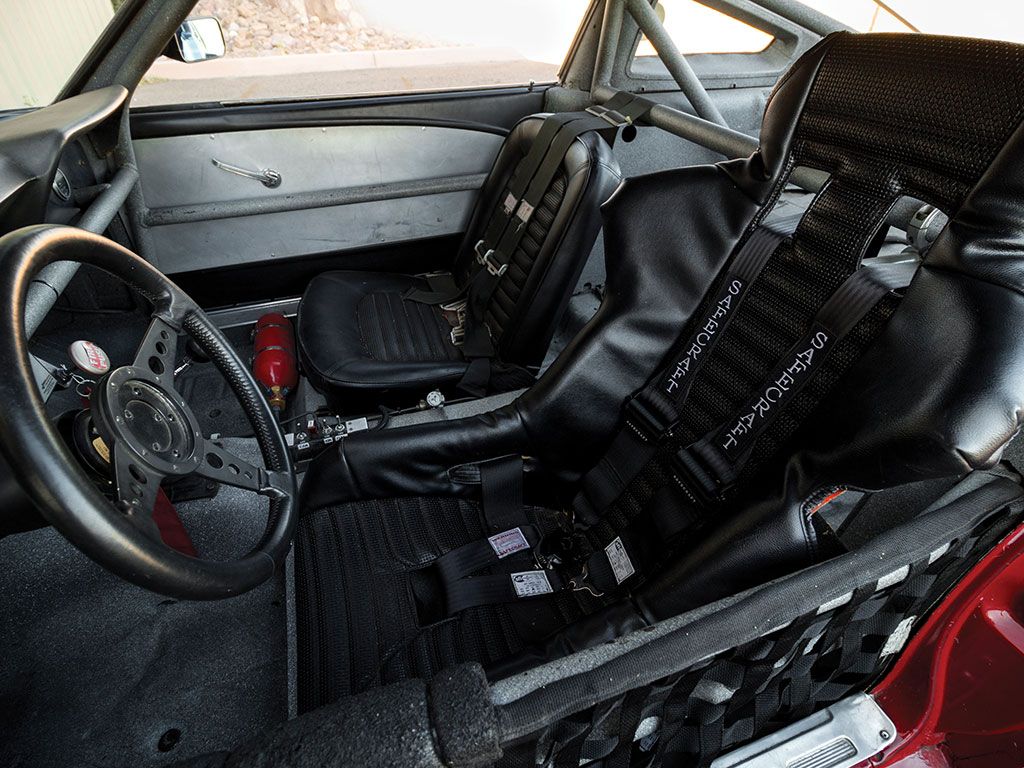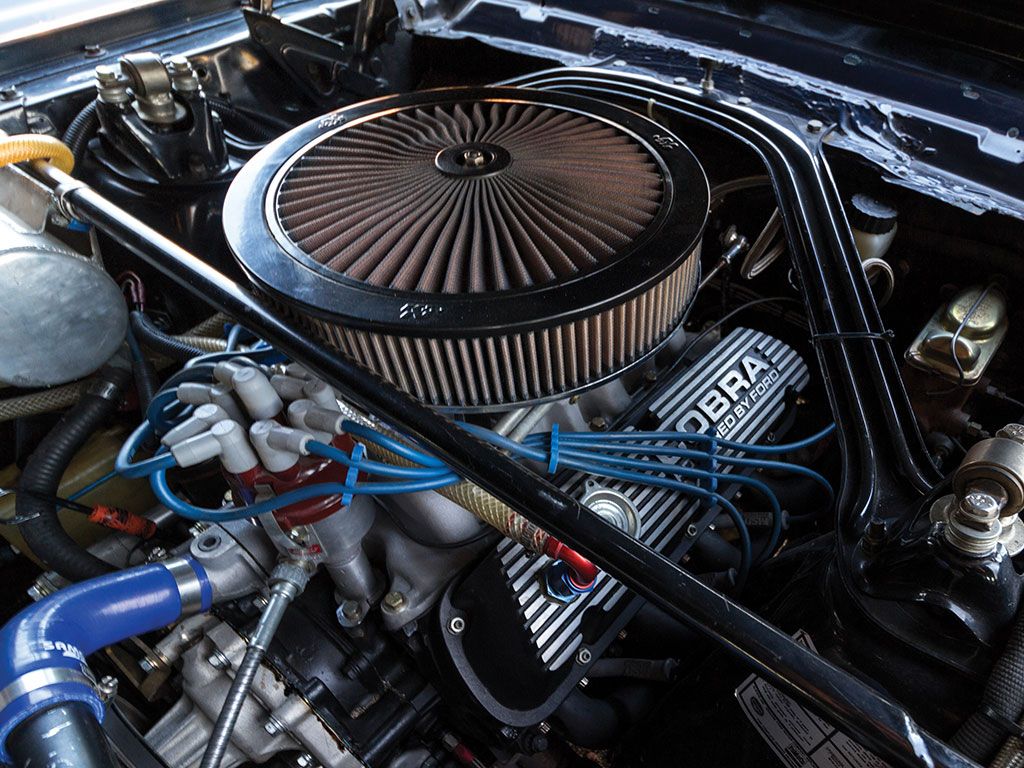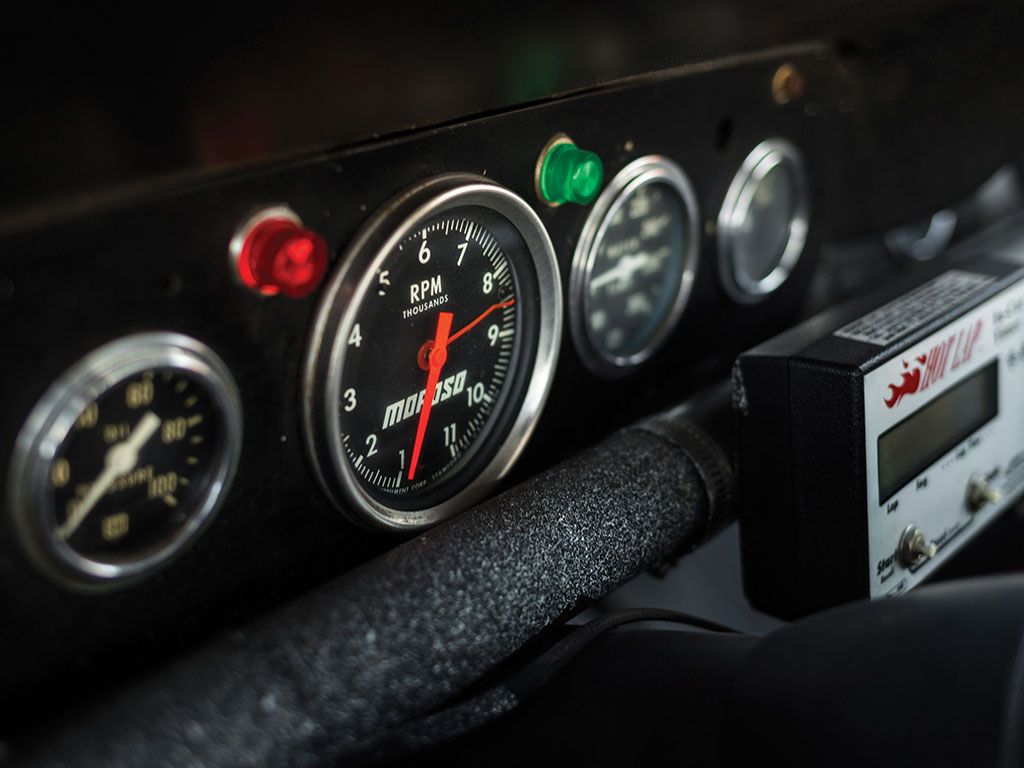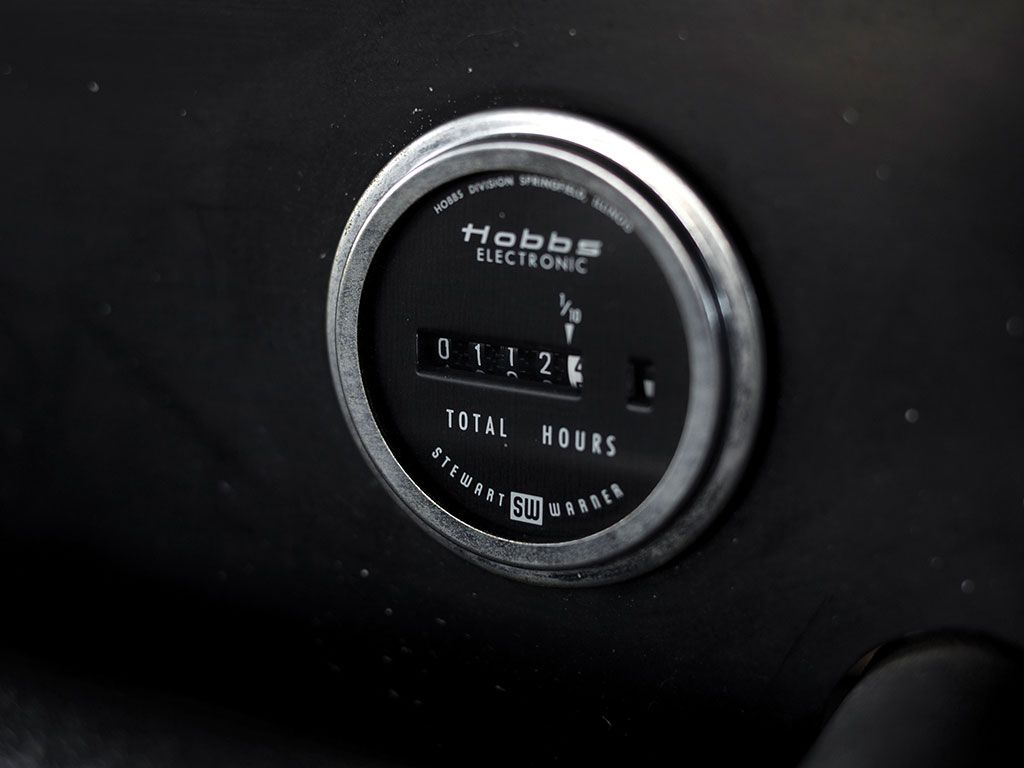The Mustang->ke428 was Ford's->ke31 biggest commercial success since the golden days of Model T production. Originally conceptualized as a strict two seater, Ford’s senior executive, Lee Iacocca, realized that its success hinged on volume sales. And volume sales were exactly what Iacocca got, over 22,000 Mustang's were sold within the first day and more than 100,000 rolled off the production line inside the first four months. Within two years, more than a million would be sold, but come summer 1964, Ford's executives thought the bubble was about to burst.
All GT350s started life on the Ford production line as Wimbleton White K-Code DSO fastbacks with a 271-horsepower 289 V-8 and black interiors. The DSO code referred to the unique blend of upgrades these cars were built with, which included several special bits from the Ford parts bin – all before being shipped to Shelby->ke81. The front disc brakes were kept, but sintered metallic pads were used instead of the softer stock ones. Station wagon drum brakes with larger metallic-lined shoes were added at the back. Also added was a nine-inch Detroit Locker differential, under-hood 'Export' bracing, and close ratio T-10 Borg Warner four-speed manual transmission with an aluminum housing.
Cars were shipped from Ford's San Jose plant to Shelby America's Los Angeles facility without hoods, grilles, rear seats, exhaust systems, or emblems. Then the transformation really began.
Continue reading for the full review
1965 Shelby Mustang GT350
- Make: Array
- Model: 1965 Shelby Mustang GT350
- Engine/Motor: V8
- Horsepower: 306 @ 6000
- Transmission: Four-speed manual
- [do not use] Vehicle Model: Array
Exterior
The man who had conceived and built the Cobra, Carroll Shelby, got a call from Ford, applied his Texas charm to SCCA's executives and decision makers, and came up with a plan to build a Mustang-based sports car. A hundred had to be ready to go by January 1, 1965 and they were, lined up and resplendent in their uniform: Wimbledon White livery with Guardsmand Blue stripes, fiberglass hoods, and Shelby identification – all ready for the SCCA inspectors' perusal. They weren't quite 'done,' but they passed muster.
Externally, the GT350 could be identified by its hood-mounted air scoop, the fiberglass hood with its pins, and the GT350 stripes along the rocker panels. An open grille with thin, horizontal bars held a small Mustang emblem to the driver’s side. An enlarge opening in the lower valance allowed even more air into the engine bay through the large-capacity radiator.
Interior
The Shelby Mustang’s interior kept the stock appearance, for the most part. The all-black cabin featured split, low-back bucket seats on either side of the tall transmission tunnel. A wood-rimmed steering wheel with three spokes of chrome brightened up the dark environment.
The Shelby’s transformation from conventional Mustang to professional racer did bring the addition of a roll cage and deleted the rear seats. A fiberglass package shelf took the place of the rear bench. This made the Mustang a 'sports car,' at least to the SCCA at the time.
Drivetrain
Engines were based on Ford's new Hi-Po 289 cubic-inch V-8. The small block already produced a respectable 271 horsepower direct from the Detroit factory. Once on Shelby's production line, each motor was equipped with a new aluminum Cobra hi-rise intake manifold to replace the stock cast-iron unit. A Holley four-barrel 715-cfm carburetor was designed not to starve or flood during hard cornering.
The V-8 breathed through lightweight tubular Tri-Y exhaust headers that fed straight pipes and low restriction glass-pack mufflers. The exhaust was re-routed to exit just ahead of the rear wheel arches. A much bigger radiator was borrowed from the air-conditioned Galaxy 500 to keep temperatures in check.
Engines were dressed with a chrome air cleaner, finned aluminum Cobra rocker covers, and a cast alloy oil pan. Power was sent rearward through a Borg-Warner T-10 four-speed gearbox. These updates amounted to 306 horsepower at 6,000 rpm – enough for a top speed of 138 mph and a 0-to-60 mph time of 6.6 seconds. While those numbers might seem weak in today’s age of 700+ horsepower muscle cars with sub four-second 0-to-60 mph times, the Shelby was strikingly quick in its prime.
Suspension & Steering
The SCCA's B Production rules said that qualifying cars could run either modified suspension or engines, but not both. Shelby opted for the modified engines route and thus Ford created the suspension from existing components at the factory. The front-suspension mounting points were repositioned and the A-arms were lowered, reduced the ride-height at the front by an inch.
The live rear axle was held in place with a semi-elliptical leaf springs and stronger torque reaction arms on top of the axle. Adjustable Koni shocks and thicker anti-roll bars were installed all round, while traction bars were added out back. Shelby further enhanced the GT350 with a quick-ratio steering rack, larger brakes, stronger spring towers up front, and oil coolers for the differential. Two 15-inch wheel styles were available: white-painted steel rims or cast magnesium Cragar wheels, both originally wrapped with Goodyear Blue Dot tires.
1966 Models
The Shelby GT350 was a modest success, with 562 built in 1965. Of those, 36 where 'R' models built specifically for racing by Shelby. The first 252 Shelby Mustangs in 1966 were actually built by Ford at the end of the 1965 model year and brought to '66 specifications by Shelby. Wisely the successful '65 GT350 wasn't changed much. No sense messing up a good thing.
With a little more time to prepare, Shelby's designer Peter Brock came up with some distinctive and functional external modifications, including cutting out the C-pillar sail panel and installing triangular windows and adding functional air intake scoops to help cool the rear brakes. Four new colors were added and most '66 Shelbys used Mustang's optional fold-down rear seat to comply with the letter, if not the spirit, of SCCA's two-seater rule. Automatic transmissions were added as an option, as was the formerly standard and noisy limited slip differential.
The distinctive identification of the 1966's and more user-friendly option availability boosted the GT3350's success with 2,378 built. The GT350's reputation far exceeds the total number built as they are among the most appreciated of all American collector cars.
Conclusion
The 1965 Ford Mustang Shelby GT350 was a huge success for Ford, as well as the Shelby brand. Though there wasn’t an exorbitant number built, the legend surrounding the original, hand-build GT350s grew to outrageous proportions. That’s why Ford continues to ride the GT350 wave with modern iterations of the car. The 2016 Mustang GT350R is as close to a modern-day replica as anybody could expect. Its engine and suspension are modified, its interior lacks a back seat, and it’s tuned to blast around a racetrack. What’s more, it’s low build numbers keep it special.
It’s hard to imagine a more iconic brand and model than the Ford Mustang, and Shelby’s GT350 only added to the image.


